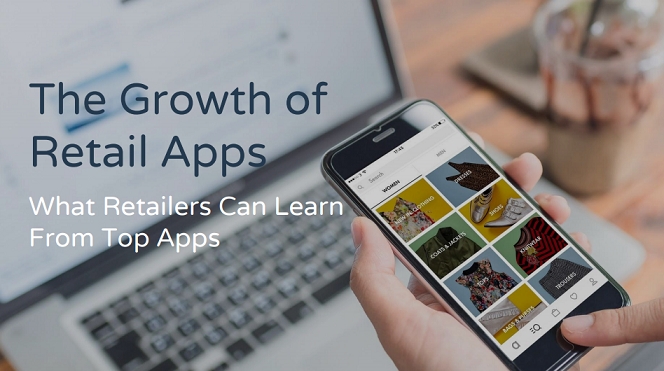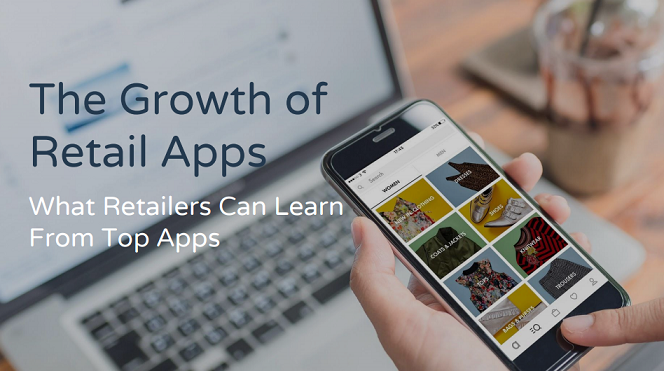
 Apps Have Disrupted the Retail Industry
Apps Have Disrupted the Retail Industry
Mobile Is Now Central to the Consumer Experience
App downloads are growing worldwide, and apps continue to be a disruptive force across industries.
Recent App Annie analysis has shown the dramatic changes faced by the quick-service restaurant (QSR) and retail banking sectors. In many ways retail is further along in the mobile transition.
Consumer behavior has shifted to favor mobile, and even a year ago half of mobile users used their phones during the purchase process (either to find more info, or to transact directly). Mobile technologies, such as beacons, mobile payments and push notifications have become long-established components of retailers’ toolkits, and it’s rare to attend a marketing meeting where mobile channels are not discussed.
In short, mobile disruption is no longer a distant threat, it’s happened — the shopping experience is omni-channel and our mobile devices are a key retail destination. There are now huge opportunities for those who can thrive in this new environment.
The Growth of Mobile Retailing
Mobile retail continues to explode globally. Estimates from industry experts vary, but all expect continued and dramatic growth over the next few years.
● Internet Retailer predicts worldwide mobile retail sales will reach $220 billion in 2016, a 53% increase versus 2015.
● Shop.Org, Forrester and Bizrate have revealed, in The State of Retailing Online Report 2016, that mobile represents 44% of retailers’ online traffic, and 31% of sales. This is even more evident in mobile-first, emerging markets — for example Amazon states that more than 70% of its online traffic comes via mobile in India.
● Salesforce and Demandware have estimated even more aggressive growth, and predict mobile retail will dominate online retail in the near future.
This is truly a global boom. App Annie has previously discussed how mobile commerce is taking off in India — a mobile first market — but growth is occurring worldwide, with Southeast Asia , China, Europe and Latin America, among many other areas, all seeing a rapid expansion of mobile retail.
As we will see, customers’ usage of mobile retail apps has also seen a dramatic increase, creating amazing opportunities for retailers to build a truly omni-channel business.
Mobile Retail Apps Are Being Used More Than Ever
In all countries analyzed, time spent in both bricks-and-clicks and online-first retail apps* increased over the past 12 months. Overall time spent in retail apps was especially high in the United States, South Korea and Japan:
● In Japan and South Korea, aging, slow-growing populations have encouraged retailers to invest heavily in engaging and retaining existing customers. Because of this, aggressive discounts and rewards are commonplace. Loyalty plans that require active participation from customers (such as the daily lucky draw in Gmarket and Super Point Up program in Rakuten Ichiba) have seen some success. South Korea will also see a boost, relative to other countries, due to high Android penetration in the market.
● In the US, this is likely a factor of a large population and a comparably large mobile install base. However, rapid growth in time spent within both bricks-and-clicks (+55%) and online-first (+60%) apps over the past 12 months indicates the growing success retailers have had leveraging their mobile apps.
European countries fall somewhat behind, possibly due to the relative immaturity of their mobile retail market. In France, for example, it’s estimated that only 24% of online retailers have a transactional mobile app. However rapid year-over-year growth, especially for online-first retailers, suggests a high level of consumer demand that is yet to be addressed.
Online-First Apps Take the Lead
Highlighting the Opportunity in the Mobile Retail Space
In every country we looked at, the top 10 online-first apps saw more sessions per user, and faster growth in sessions per user, than the top 10 bricks-and-clicks apps.
Engagement in online-first apps is especially high in South Korea, where the average number of sessions per user was almost three times higher than in any other country. This was driven by apps such as 11st, Coupang and WeMakePrice — marketplaces offering a huge range of products, at competitive prices, with strong vertical integration throughout the retail process.
France had the lowest average sessions for bricks-and-clicks apps, and saw a decline over the past 12 months. However, with the second highest growth in sessions for online-first apps, it’s clear there is demand that traditional retailers can explore. Online-first apps like vente-privee and showroomprive, that offer member-only flash sales, are leading the way — presenting a successful model others can learn from.
Germany, a market that’s traditionally conservative when engaging in electronic transactions, has experienced rapid growth
in sessions per user. Big international retailers, such as Amazon, Wish and Geek are seeing particularly high levels of engagement.
Executive Summary
● Mobile disruption to retail is no longer a distant threat, it’s happened. Many retailers are now omni-channel and experiencing the benefits mobile can bring to their existing businesses.
● The retail app environment has changed. Technology has provided more options for retailers to build an engaging customer journey.
● The mobile retail sector continues to grow. For the countries analyzed, total time spent in bricks-and-clicks retail apps increased by nearly 40% over the past 12 months. Online-first apps increased by more than 50%.
● Apps from online-first retailers are seeing more sessions per user, and faster growth, than those from bricks-and-clicks companies. There are significant opportunities for traditional retailers to learn from online specialists.
● By following best practices for retail apps, including effective user acquisition and engagement strategies, traditional retailers can further enhance their success on mobile. This can result in higher conversion, increased loyalty and more frequent engagement.
